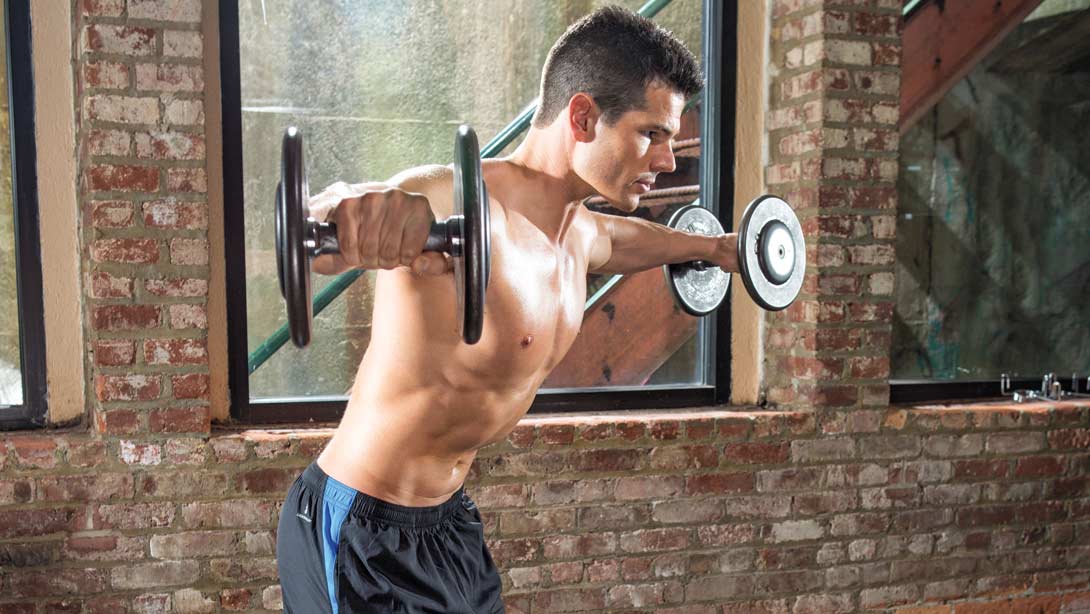Sidelong raises, knew about them? What might be said about a free weight parallel raise, DB lat raises, lat raises, a side lat raise or shoulder horizontal raises? There are a few varieties, yet regardless of which type you go for, sidelong raises are the disconnection exercise to do on the reg on the off chance that you're attempting to focus on your shoulder muscles. Not least on the grounds areas of strength for that can help safeguard against injury - something it's generally a somewhat smart thought to keep away from.
What muscles do horizontal raises work?
Deltoids (basically)
Upper arms
Center
DB (free weight) sidelong raises principally work the shoulder muscle, or as the muscle bunch is formally known, the deltoids.
Horizontal raises draw in the foremost and average heads, the muscles that stretch out close by the front and sides of your shoulders and are locked in by raising your arms horizontally to one or the other side of you.
What are the advantages of horizontal raises?
Are parallel raises worth doing? Definitely - especially in the event that it's solid, portable shoulders you're later, says Gympass Fitness coach, Becky Bowman. As they ought to be, considering that your shoulder joint is one of the most un-stable in your whole body. Who knew?
'An extraordinary advantage of parallel raises is that it further develops in general shoulder strength by detaching the deltoid muscle and further developing shoulder versatility,' Bowman tells us.
What's more, that is not all. How about we sum up every one of the advantages of horizontal raises, will we?
More grounded deltoids (shoulders)
Expanded shoulder versatility
Can help safeguard against shoulder injury
Novice amicable
Flexible - can be performed with hand weights, an obstruction band or link machine
Require insignificant exercise space
Sidelong raise structure: how to do horizontal raises
Hand weight horizontal raises are a straightforward move whenever you have the hang of them. This is a helpful the way to.
Stand with a free weight in each hand, arms by your sides, palms confronting inwards.
Guarantee your shoulders are loose (not raised), your abs are locked in (think straining, rather than taking in), and there's a slight twist in your knees.
Holding this stance, lift the hand weights out to the sides with straight arms, going no higher than shoulder level.
Interruption and actually look at your position - is your back still impartial and your tailbone tucked under? Is there a delicate curve at each elbow? 'It's critical to get your shoulders far from your ears legs still to guarantee legitimate structure,' Bowman adds.
Step by step (for example try not to simply allow your arms to fall down, move with control) bring down the hand weights to the beginning position. Rehash for 3 arrangements of 8-12 reps.
Lat raise structure botches: 3 things to keep an eye out for
You're simply lifting hand weights all over, isn't that so? Not hard to wreck that. All things considered, in fact... likewise with numerous strength preparing moves, the overlooked details are the main problem. Get around the three principal signs you're performing horizontal raises wrong.
1. Your back is angled
You're jeopardizing your lower back. Support yourself by propping your center and keeping an unbiased spine (no curving or adjusting of the back) from the very outset to complete of every horizontal raise.
2. You're swinging the loads
Stop. Your development ought to be controlled development without energy. You'll see this most while you cut the loads down. On the off chance that you're battling, have a go at utilizing a lighter weight.
3. You're raising your shoulders
We've discussed this, companion. This could strain your neck and those muscles on your collarbone. Keep them loose, and breathe out as you lift - it's like an emptying stunt for your shoulders.
Instructions to make sidelong raises harder
Stressed that sidelong raises are somewhat, indeed, fundamental? 'Individuals could do without to do seclusion practices since they get exhausted,' says PT Mapule Ndhlovu.
Her fix is to make it harder by testing your equilibrium. Lift your left leg, then lift the load in your right hand all over, and rehash on the contrary side. You'll be enacting stabilizer muscles (hi, abs) you never realized you had.
Drop it slow: Lower the weight gradually, counting out six seconds. Feeling that consume? Great.
Turn it up: At the highest point of the lift, pivot your wrist, tipping the load as though pouring water from a container.
Circle it: Make little circles with your arms when they're at shoulder level.
FAQs
Can you build shoulders with just lateral raises?
Look no further than lateral raises. This exercise can be one of the keys to achieving the “V shape” and developing shoulders that make your shirts stand out. The lateral raise may seem like a simple exercise (just raise your arms, lower them and repeat), but there are some key points to keep in mind to get the most out of the movement.
How do you isolate shoulders in lateral raises?
In fact, for shoulder health, this should not be enough for you. Pages. Instead, you'll want to work on lateral elevation in what's called the "scapular plane." It sits about 20-30 degrees in front of your torso, so your arms are slightly bent as you lift the weight.
Are lateral raises good for shoulder strength?
Lateral raises are a great exercise for strengthening your shoulder muscles! This is a simple movement that is usually performed with weights. Of course, as with any exercise, you need to learn proper lateral raise form and avoid common mistakes.






.png)
